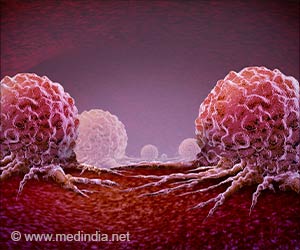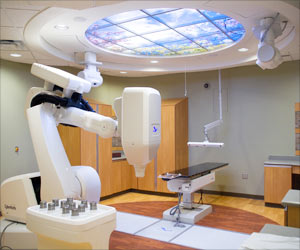The oncology market for PROTACs is projected to reach $3.7 billion by 2030, even though there are no FDA approved therapies currently.
- Protein homeostasis is critical for physiology of cell and their functioning
- PROTACs have the ability to target and degrade specific oncoproteins, facilitating prolonged efficacy and fewer side-effects in cancer treatment
- Various on-going clinical trials show promising results of PROTAC pipeline products
PROTACs: Current and Future Potential as a Precision Medicine Strategy to Combat Cancer
Go to source). These innovative compounds work by connecting a protein of interest (POI) ligand to an E3 ubiquitin ligase (E3) ligand through a linker, thereby promoting the degradation of the POI. However, in spite of more than 20 years of research, no PROTAC therapy has received FDA approval for cancer treatment. Although there are no approved PROTAC therapies, the PROTAC oncology market is expected to reach a value of $3.7 billion by 2030, as projected by GlobalData, a foremost data and analytics company.
According to the analyst consensus forecasts from GlobalData, PROTACs are expected to achieve significant sales; in particular, the vepdegestrant developed by Arvinas and Pfizer shows great potential. It is currently being evaluated as a standalone treatment for HER2-negative breast cancer in the second-line setting in the ongoing Phase III VERITAC-2 clinical trial. In addition, it is also being investigated as a first-line therapy in combination with Pfizer's Ibrance (palbociclib) in the Phase III VERITAC-3 clinical trial.
By 2030, it is projected that vepdegestrant will hold a significant share of the worldwide PROTACs market, contributing to more than 34% of the market. This is expected to result in sales exceeding $1.2 billion. Arvinas, on the other hand, is actively working towards expanding its market presence by creating multiple PROTACs such as bavdegalutamide and ARV-393, which are designed to combat different types of cancers.
Proteolytic Regulation in Cancer Research
Protein homeostasis is crucial for the proper functioning and physiology of cells (1✔ ✔Trusted SourcePROTACs: Current and Future Potential as a Precision Medicine Strategy to Combat Cancer
Go to source). It requires precise control over protein activity, localization, and abundance. One key mechanism involved in achieving this balance is protein ubiquitination. The ubiquitin proteasome system consists of a range of ubiquitination proteins that attach multiple ubiquitin molecules to protein substrates. This polyubiquitination process marks the proteins for degradation by the 26S proteasome, ultimately influencing their abundance and, consequently, their function.
There has been an intense interest to understand proteolytic regulation in the field of cancer research especially the targeting abilities of the ubiquitin proteasome system to selectively degrade proteins, specifically oncoproteins, for therapeutic advantages.
There are several proteolytic strategies currently being developed. Among these, proteolysis targeting chimeras (PROTACs) stand out as one of the most advanced proteolytic targeting methods available today.
PROTACs As a Strategy for Cancer Treatment
PROTACs comprise of ligands targeting specific proteins, recruiting elements for E3 ligase, and linkers (2✔ ✔Trusted SourcePROTAC: A promising technology for cancer treatment
Go to source).
PROTACs have the potential to target the undruggable oncoproteins. They also have increased target specificity and capability to degrade the targeted proteins in cells that become resistant to small molecule inhibitors. These properties of PROTACs will enable prolonged efficacy and low effective doses with reduced off-target effects as compared to the conventional small molecule inhibitors.
In addition, the emergence of drug resistance in patients undergoing chemotherapy poses another challenge in cancer treatment. Research studies have led to data that PROTACs have potential to restore drug sensitivity in various cancer conditions.
The Oncology and Hematology Analyst at GlobalData, Biswajit Podder, Ph.D, states, “PROTACs represent a promising strategy for selectively eliminating 'undruggable' proteins, offering new therapeutic possibilities not only in cancer but also in neurodegenerative diseases, immune disorders, and viral infections. By degrading rather than merely inhibiting target proteins, PROTACs can overcome acquired resistance to conventional targeted therapies."
Clinical Trials on PROTACs
Currently, there are 39 Phase I-III clinical trials ongoing globally, testing various PROTAC molecules. Among these, only two, including vepdegestrant, have reached Phase III. In addition, bavdegalutamide of Arvinas, which targets the androgen receptor, is in Phase II clinical trial for metastatic castration-resistant prostate cancer as a third-line therapy. This suggests that Arvinas is well-positioned in the PROTACs oncology market with multiple pipeline products.Podder further states, “Arvinas' collaboration with Novartis on ARV-766, a next-generation PROTAC, showcases the potential of PROTACs and the interest from big pharma. Novartis’ resources and experience could hasten its approval as a first-in-class prostate cancer treatment. Successfully progressing these agents through clinical development could position Arvinas as a leader in the PROTACs oncology market.”
Challenges Associated with PROTACs and Efforts to Overcome
The delivery of PROTACs into the necessary tissues and cells within a patient poses a fundamental obstacle in fully realizing their clinical potential. The large molecular mass and polarity of PROTACs have an adverse effect on cell permeability.Further, when targeting the overexpressed, wild type of oncogenic proteins, PROTACs may also induce side effects.
Podder concludes stating, "However, the development of PROTACs is not without challenges. Their large molecular size can hinder their ability to enter cells and reach the protein of interest. Hence, enhancing their cell permeability and solubility is critical. Moreover, the variability in E3 ligase expression across different cancer types complicates their widespread application."
A number of investigations are in progress to enhance the targeting efficacies and improve cell permeability. One such approach is using Nanotechnology to improve drug delivery, specificity, and efficiency.
These initiatives to overcome challenges could result in the regular use of PROTACs in clinical settings. This is anticipated to transform approaches to cancer treatment, postpone the onset of familial cancer, and ultimately enhance the lives of individuals coping with cancer.
Future of PROTACs as Long-term Anticancer Therapeutics
The use of PROTACs for clinical therapy is still in early stages, as the clinical trials are currently in-progress. To bring PROTACs into clinical practice, key aspects must be addressed and optimized. These include specific delivery to cancer cells to minimize off-target effects, identifying more PROTAC E3 ligases for optimal target degradation and tissue specificity, and understanding the E3 ligase landscape in malignant cells at a genomic and epigenomic level. Thorough evaluation in preclinical models and clinical trials is necessary to fully realize PROTACs' therapeutic potential.To summarize, it is expected that PROTACs will enhance the targeting of tumors and existing cancer treatments through the implementation of innovative precision medicine approaches. Moreover, PROTACs have the potential to become a valuable tool in precision medicine by targeting synthetic genetic interactors, and they may also be beneficial in the prevention or delay of familial cancer syndromes by targeting the underlying mutant proteins.
It is anticipated that as this technology continues to advance and evolve, PROTAC also has the potential to rival the success of small molecule inhibitors, monoclonal antibodies, and immunotherapy, ultimately benefiting a larger number of patients suffering from various diseases (3✔ ✔Trusted Source
An overview of PROTACs: a promising drug discovery paradigm
Go to source).
References:
- PROTACs: Current and Future Potential as a Precision Medicine Strategy to Combat Cancer - (https://aacrjournals.org/mct/article/23/4/454/741867/PROTACs-Current-and-Future-Potential-as-a)
- PROTAC: A promising technology for cancer treatment - (https://pubmed.ncbi.nlm.nih.gov/32698111/)
- An overview of PROTACs: a promising drug discovery paradigm - (https://www.ncbi.nlm.nih.gov/pmc/articles/PMC9763089/)
Source-Medindia
















